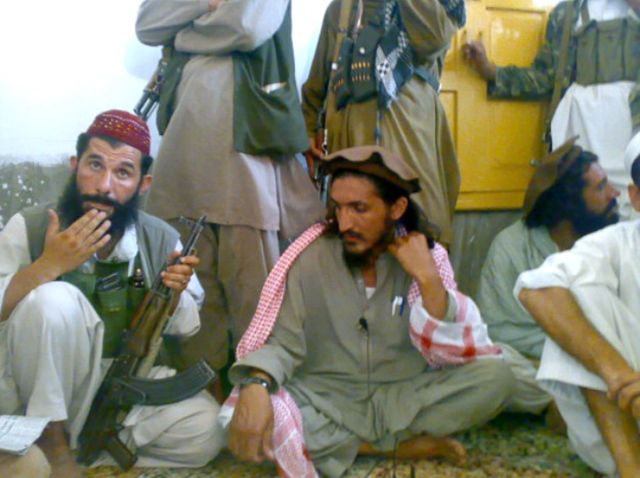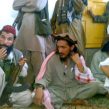
Karachi Emerges as Pakistan’s New Tinderbox of Violence and Extremism
Publication: Terrorism Monitor Volume: 8 Issue: 26
By:

Two commanders of the Tehrik-i-Taliban (TTP) were arrested in the Pakistani port of Karachi on June 11, charged with plotting suicide attacks in the city of 18 million people. Only days later, four militants attacked a Karachi court house with firearms and grenades to successfully free four members of the Sunni extremist group Jundallah. One policeman was killed when the four suspects produced their own pistols and grenades, apparently retrieved from a hiding place in the courthouse public washroom they had been allowed to use (AFP, June 11; Dawn [Karachi], June 21; The News [Islamabad], June 21). The four Jundallah members were on trial for their role in the brutal “Ashura bombing” that killed 43 Shiites on December 28, 2009. Beyond these dramatic events, a wave of sectarian murders and political assassinations continued unabated in Karachi throughout June.
Despite serving as Pakistan’s financial hub, Karachi continues to be a tinderbox of violence due to a number of factors, including:
• Its diverse ethnic mix.
• A history of sectarian and ethnic conflict.
• Battles for turf and political influence.
• The complex dynamics of urban governance.
• Growing “Talibanization,” particularly in Pashtun neighborhoods like Sohrab Goth.
• The continuing growth and expanding influence of the Pashtun community as refugees from the fighting in northwest Pakistan continue to arrive.
The biggest ethnic group in Karachi is made up of six million Muhajirs, descendents of Urdu-speaking Indian Muslims who migrated from India in 1947. The Muhajirs are followed by three and a half million Pashtuns, two million Sindhis and Baloch, and several million immigrants from other countries such as Bangladesh, Afghanistan, Iran, Burma and elsewhere. Ninety-six percent of the population is Muslim, with some 30% of those being Shi`a. During the last two to three years, approximately 200,000 displaced people have migrated to Karachi from the conflict zones in the northwest Pakistan due to ongoing military operations. Such a large movement of peaceful civilians along with thousands of armed militants has added to the fragility of an already frail and complex society (Dawn, January 14).
Karachi is no stranger to violence. In the 1980s and 1990s, Karachi was compared to the Beirut of the 1970s due to its ethnic-based violence. However, throughout most of the presidency of General Pervez Musharraf (1999-2008), Karachi remained largely peaceful until 52 people were killed in the May 2007 riots that followed the visit of then-sacked Chief Justice Iftikhar Chaudri and the attack on former Prime Minister Benazir Bhutto’s procession in October 2007 in which 139 people were killed. Since 2009 there has been an increase in violence – mostly targeted killings of individuals, except for the December Ashura bombing, which was followed by looting and arson attacks that destroyed most of Karachi’s commercial center (see Terrorism Monitor, January 7). Since then the targeted killings have continued unabated.
Depending on their affinity, politicians from different spectrums of the political divide have blamed each other for the current mayhem. While the Muhajir-dominated Muttahida Quami Movement (MQM) has mainly blamed Pashtuns, the Pashtun nationalist Awami National Party (ANP) and the Talibanization of Karachi for the current violence, Interior Minister Rehman Malik has pointed to an illusory third force and sometimes “non-state actors” as the problem. Pashtun nationalists have in turn blamed MQM for the violence, claiming that most of those killed are Pashtuns. This line was supported even by an arch-rival of the ANP, Jamaat-i-Islami provincial chief Siraj ul-Haq, when he pointed out that more than 17,000 people have been killed in Karachi since the creation of MQM in 1987 (The News [Islamabad], June 1). The Pakistan Peoples Party (PPP), the biggest party in the federal government coalition and the Sindh provincial coalition government, has remained mostly silent because of its dependence on MQM as part of the uneasy Sindh coalition government and because the MQM and ANP are its partners in the federal coalition. However most observers of the scene contend that the unrest in Karachi is multi-causal, with ethnic tensions, the convoluted politics of the city, the quest for control by “land mafias” and the nexus these various vested interests have with political parties constituting most of the reasons.
There is no doubt that Taliban fighters are moving to the city in increasing numbers. However, it is unlikely that the Taliban would be involved in the current spat of targeted killings, as Karachi is a sanctuary where they can hide, take rest, receive medical treatment and raise money through donations, ransom and extortion. They would not like to create a situation in which they are the main focus of law-enforcement agencies. Nevertheless, the involvement of sectarian anti-Shi`a organizations who are closely allied with the Taliban cannot be ruled out, as most of the killings during the last four to five months have targeted Shi`a professionals. Interior Minister Rehman Malik, however, has said that “some third elements were involved in the sectarian violence” without naming them (The News, June 20).
In the responsibility for the current mayhem, local land and water mafias cannot be overlooked. There is a chronic shortage of housing and water in Karachi while demand continues to grow due to the extremely rapid increase in population. There are currently five million people who are living in illegal slums and squatter settlements. A huge lucrative underground economy has grown around fulfilling the housing and water needs of these people. Rival mafias have marked their turf, consolidated their businesses and kept law enforcement agencies at arms length by sharing their revenues with them. The inability of the government to provide basic facilities and services to people has strengthened local dependence on these mafias. During the last two years, turf wars between criminal organizations have increased sharply (BBC, December 28, 2009). Seventeen real estate agents were killed during the last six months of 2009, victims of the land mafias and other gangs (Dawn, December 28, 2009). There are also gang wars over narcotics smuggling operations in the Lyari area of Karachi (Dawn, January 14). Provincial Youth Affairs Minister Faisal Subzwari suggested that "These are targeted killings by criminals, drug and land mafias who want to fan ethnic violence in the city " (AFP, April 30, 2009).
It is not yet clear how the government will deal with this situation. Karachi’s fragile law and order situation is causing jitters to many because of its strategic location as a primary port for supplies heading to U.S. and NATO troops in neighboring Afghanistan. Karachi is also important because it is home to Pakistan’s central bank and its largest stock exchange, and generates 68% of the government’s revenue and 25% of the country’s gross domestic product (Reuters, December 2, 2009). Its destabilization would on one hand translate into a massive disruption to NATO’s Afghanistan supply chain and on the other undermine the already weak economy of Pakistan. Moreover, Karachi’s urban chaos could provide cover for even more Taliban and al-Qaeda militants who are looking for hide-outs away from army operations in Pakistan’s northwest frontier region.





